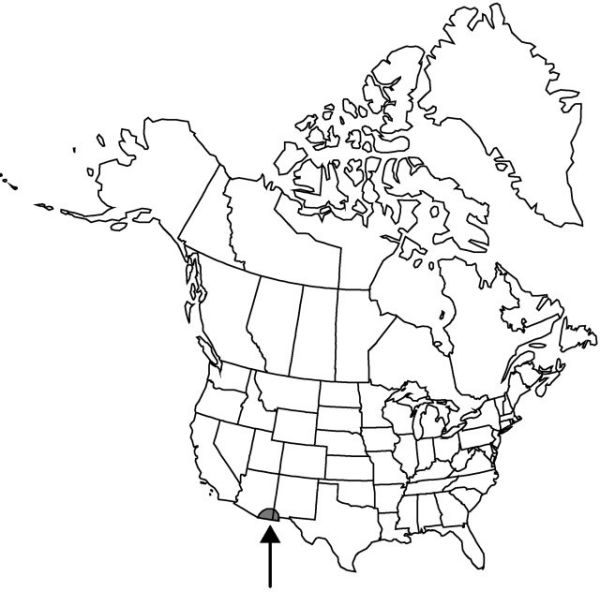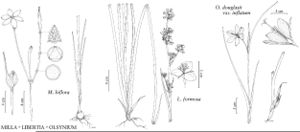Milla biflora
Icon. 2: 76, plate 196. 1793.
Corm ovoid, 1–2 cm; coat brown or reddish-brown, minutely striate, splitting from base into narrow strips that shred and appear fibrous. Leaves persistent, 2–7 (–10), 1 mm wide, 1/2 as long as to equaling scape; blade channeled. Scape 4–55 cm, scabrous on proximal veins. Inflorescences 1–9-flowered, if solitary, one or more undeveloped flower buds often present; bracts 4 in 2 whorls, 5–12 mm, apex acute. Flowers 4.5–18 cm (appearing 2.5–4 cm due to pseudopedicel); perianth-tube with lacuna between stipe angles to within 0.5–5 cm of base, then tube and stipe completely fused into pseudopedicel; perianth lobes spreading, white with green abaxial stripe, 3–5-veined, elliptic, becoming papery and persisting in fruit, eventually split by developing capsule, 1.5–2.5 cm; outer lobes 5–10 mm wide, apex subacute, inner lobes 8–12 mm wide, apex rounded; filaments triangular, 1 mm; anthers yellow, lanceolate, sagittate at base, 3–5 mm, suture margins minutely denticulate, ± crisped; ovary proximally adnate to perianth-tube, ovoid to obovoid, 1 cm, stipe 3–16 cm; style exserted; stigma capitate, minutely 3-lobed. Capsules ovoid, 1.5–2 cm; beak 1.5–2.5 mm.
Phenology: Flowering mid Aug–Sep.
Habitat: Most volcanic soils, dry hillsides, ridges
Elevation: 1000–2700 m
Distribution

Ariz., N.Mex., Mexico, Central America (Guatemala)
Discussion
Persistent reports of the occurrence of Milla biflora in trans-Pecos Texas are due to a collection made by Charles Wright “On the San Pedro, West Texas” in 1851–1852. Wright was not in west Texas during the blooming period of M. biflora in either year. This collection most likely came from along the San Pedro River below Benson, Cochise County, Arizona.
Selected References
None.
Lower Taxa
"broad" is not a number."thicker" is not a number.
